Juniper Garden Ideas: Creative and Lush Landscaping Tips
If you’re looking to enhance your garden, juniper shrubs can be a fantastic addition. These versatile plants come in various shapes and sizes, offering year-round beauty to any landscape.
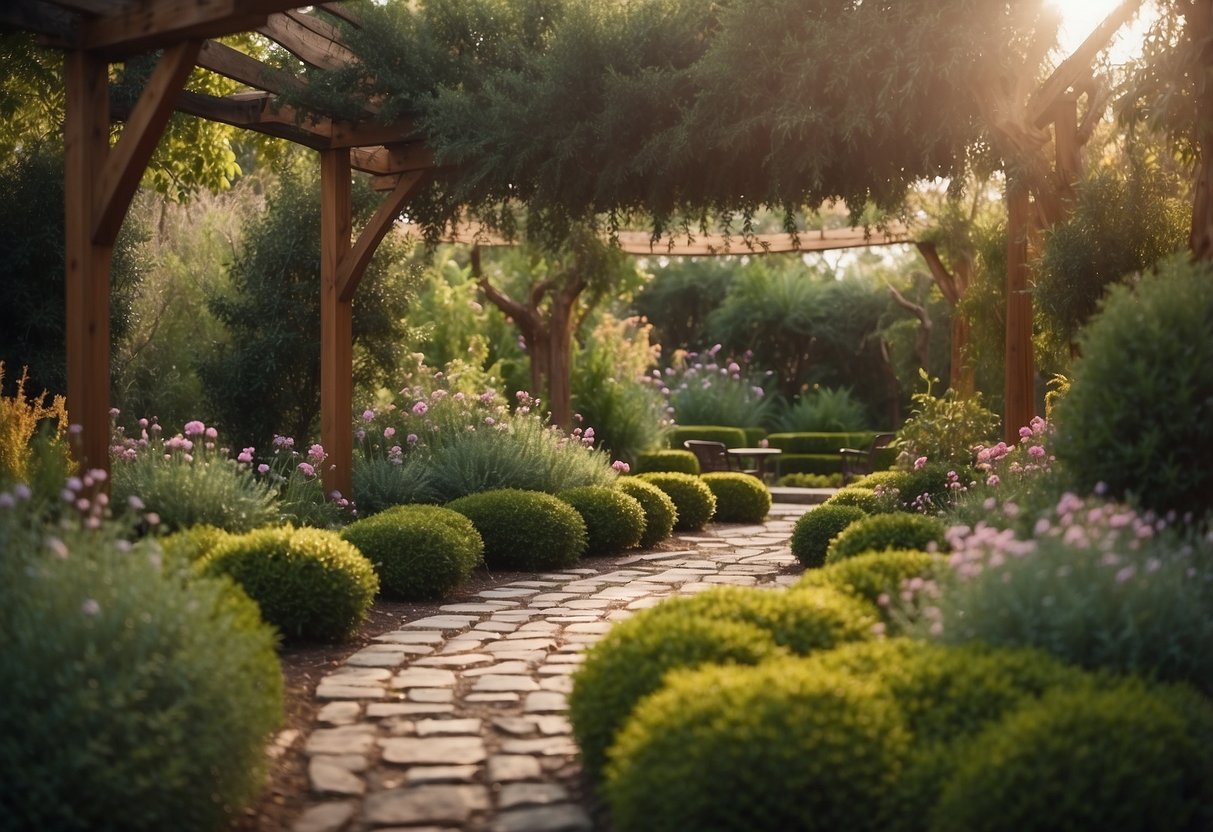
Juniper bushes are low-maintenance and can thrive in different climates, making them ideal for gardeners of all skill levels. Whether you want a formal hedge or a ground cover, there’s a juniper variety perfect for your needs.
1) Blue Star Juniper Pathway
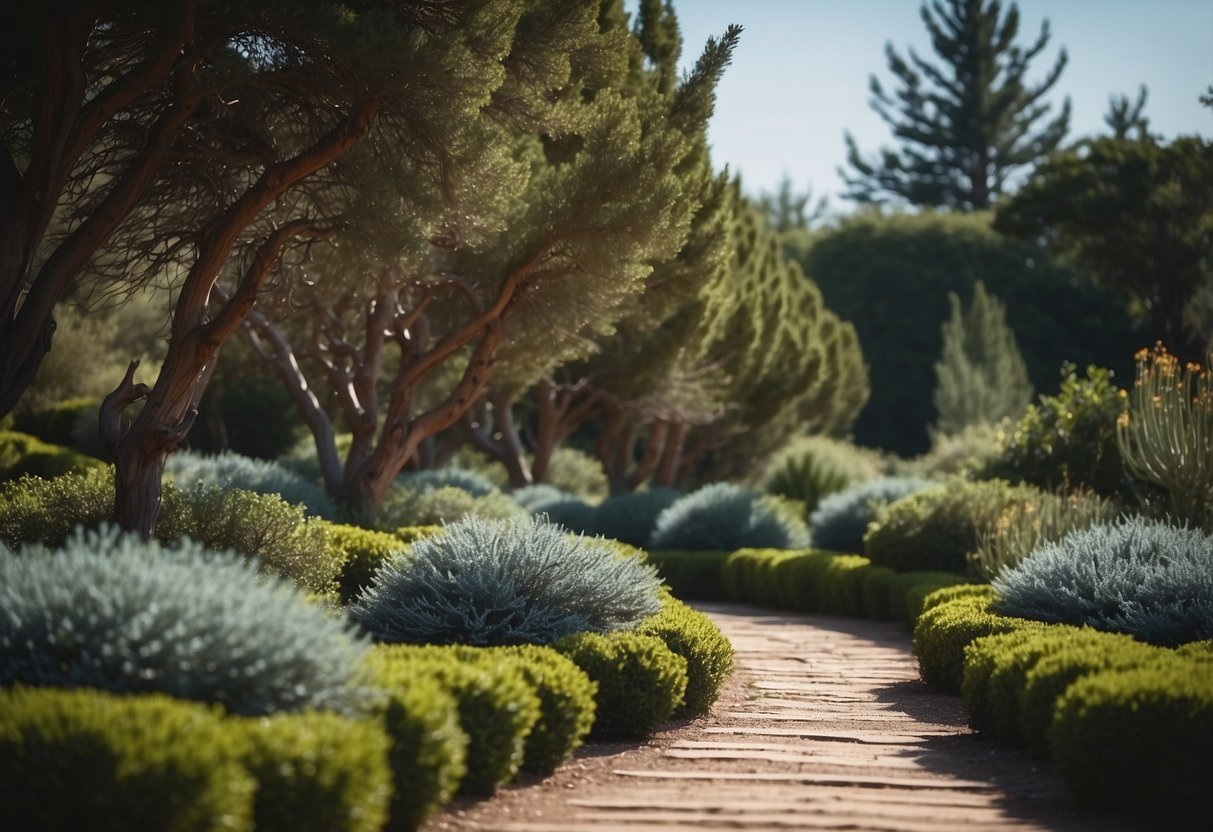
Planting a Blue Star Juniper pathway in your garden adds a lovely touch of color and texture. The compact, blue-green foliage of the Blue Star Juniper contrasts beautifully with other plants.
Lavender makes a great companion along the pathway. Lavender thrives in dry environments and shares resources with the juniper.
Dusty millers and lamb’s ears complement the pathway with their silvery foliage and soft texture. This combination creates a visually appealing and low-maintenance garden feature.
You can learn more about suitable companion plants for Blue Star Juniper at Plant America and Florgeous.
2) Juniper Berry Footpath
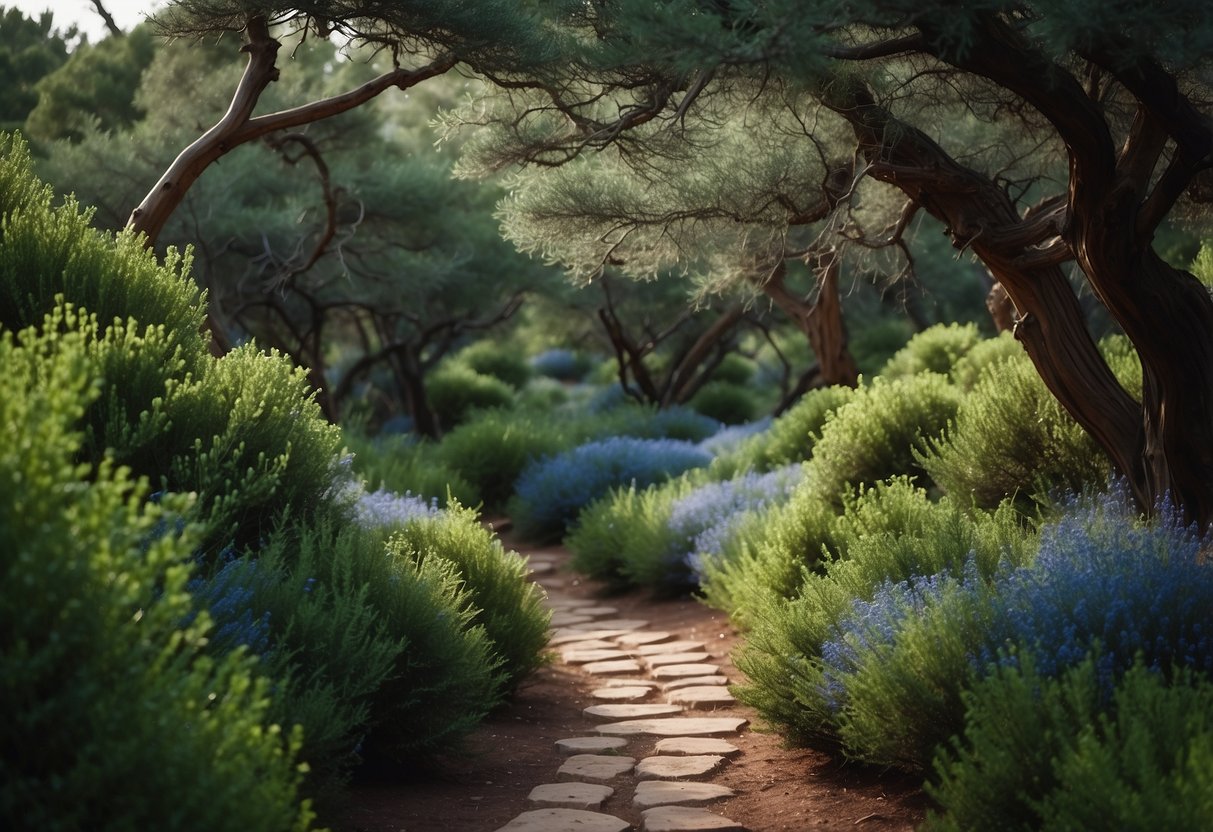
Create a charming path in your garden using juniper berries. The berries add both a rustic touch and a delightful fragrance to your footpath.
Gather fresh berries and spread them along the edges of your path. You can mash them slightly to release their scent as you walk.
Combine them with small stones or wood chips to enhance the natural look. Your garden will smell great and look beautiful too.
3) Sculpted Juniper Topiary

Sculpting juniper into topiary shapes can add a unique charm to your garden. Junipers are versatile and can be shaped into various forms like spirals, cones, or animals.
Start by choosing a healthy juniper plant. Use tools like string or wire templates to guide your cuts.
For a simple project, create a cone or spiral shape. This can make your garden look more organized and stylish. Sculpted juniper topiary not only looks beautiful but also adds a sense of structure to your garden layout.
Keep your tools sharp and clean for the best results. Regular trimming is essential to maintain the shape. With a little practice, your juniper topiaries can become stunning garden features.
4) Japanese Garden with Dwarf Juniper

Creating a Japanese garden with dwarf juniper can be a peaceful retreat in your yard. Dwarf Japanese garden juniper, known for its low-growing and spreading nature, is ideal for adding structure and elegance.
The Dwarf Japanese Garden Juniper ‘Nana’ has beautiful bluish-green foliage that forms a dense mat. This makes it perfect for ground cover in Japanese gardens.
Plant the juniper alongside rocks and small water features to create a serene atmosphere. You can also combine it with other plants like hibiscus bushes and goldmoss sedum to add color and variety.
5) Evergreen Privacy Screen
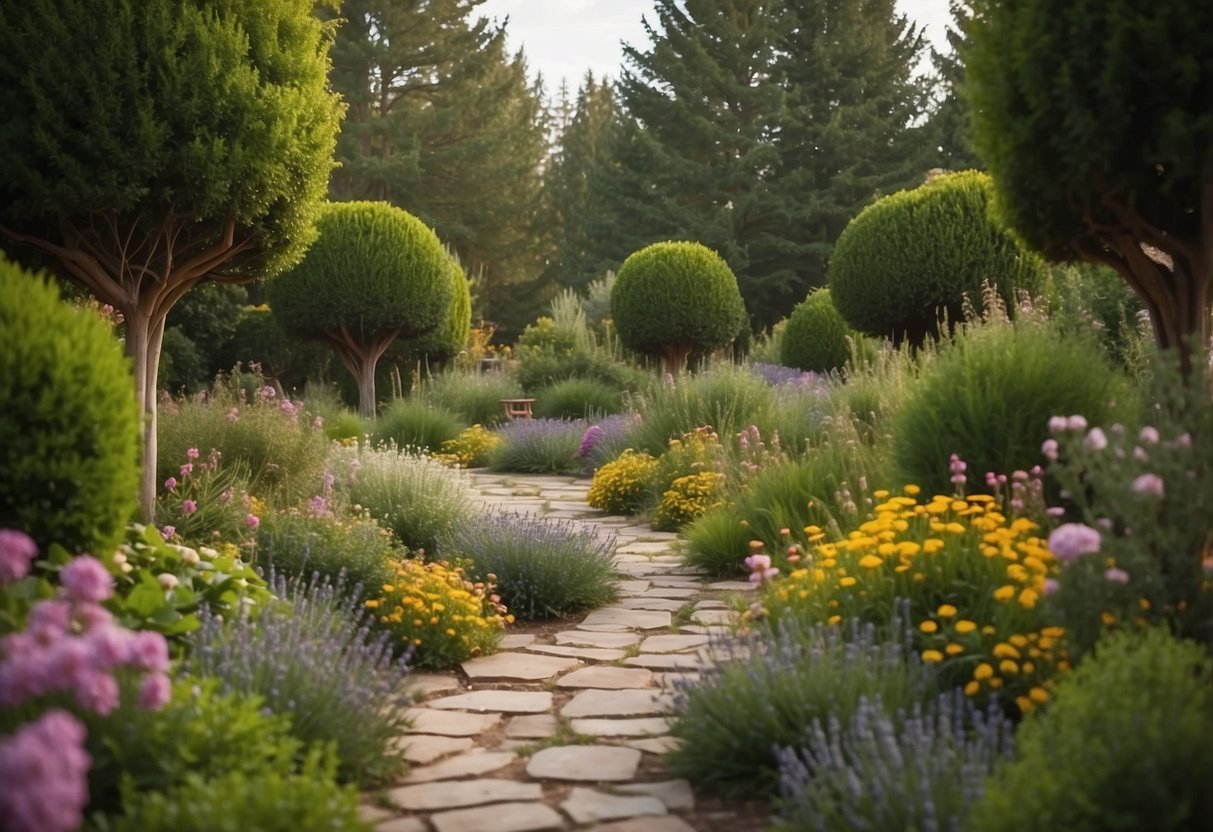
An evergreen privacy screen can be a fantastic addition to your garden. These plants stay green year-round, giving you privacy and beauty in all seasons.
Junipers are a great option for this purpose. They offer a variety of shapes and sizes. Some types, like the ‘Golden Cone’ Common Juniper, provide a tall and narrow shape that’s perfect for smaller spaces.
Junipers’ dense foliage makes them effective at blocking views and noise. They can also handle pruning well, so you can keep them looking neat and tidy without much hassle.
6) Juniper Bonsai Focal Point

A Juniper Bonsai makes a stunning focal point in any garden. Its intricate shape and vibrant green foliage draw the eye and create a sense of tranquility.
You can place your Juniper Bonsai on a pedestal or a special stand to highlight its beauty. Consider pairing it with stones or a small water feature for added charm.
Make sure to prune and shape the bonsai regularly. This helps maintain its unique look and keeps it healthy. Enjoy the timeless appeal of a Juniper Bonsai as the centerpiece of your garden.
7) Ground Cover Juniper Carpet

Creating a ground cover juniper carpet can transform your garden into a lush, green landscape. You can use different types of creeping juniper, such as the Blue Rug variety, which has attractive blue-green foliage.
Creeping juniper thrives in well-drained, sandy soil. It’s perfect for areas with poor quality or compacted soil where other plants struggle. These plants are also drought-tolerant, making them a low-maintenance option for your garden.
For a pop of color, the Golden Carpet variety offers bright golden foliage that turns deep gold and salmon-orange in winter. It’s a striking addition to any garden space.
8) Rustic Juniper Hedge
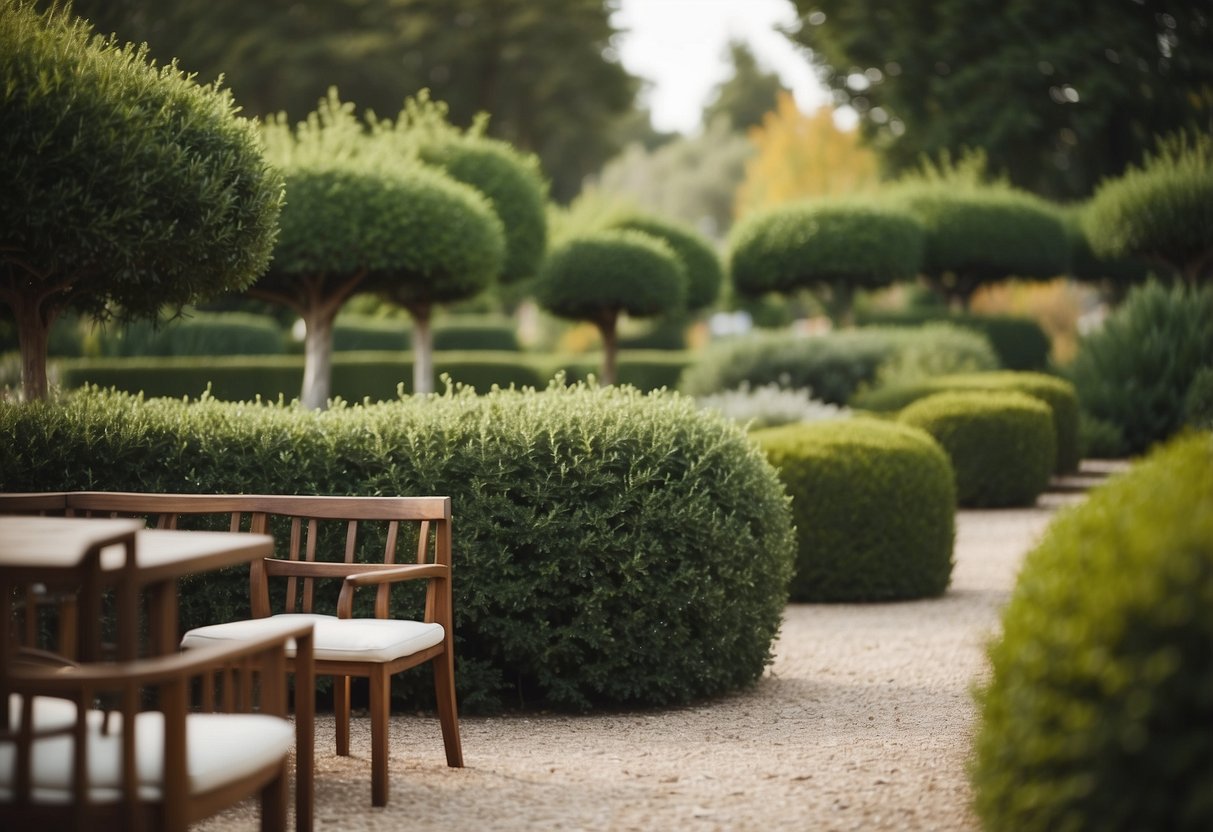
Creating a rustic juniper hedge adds a charming and natural element to your garden. Junipers are hardy and can thrive in various conditions, making them an excellent choice for hedges.
Plant the shrubs close together to form a dense barrier. This provides privacy and acts as a windbreak. Choose varieties that suit your climate and soil type for the best results.
Regular pruning will help maintain the shape and encourage healthy growth. Juniper’s unique foliage and texture bring rustic appeal to your garden, creating a cozy, natural look.
9) Zen Rock Garden with Juniper
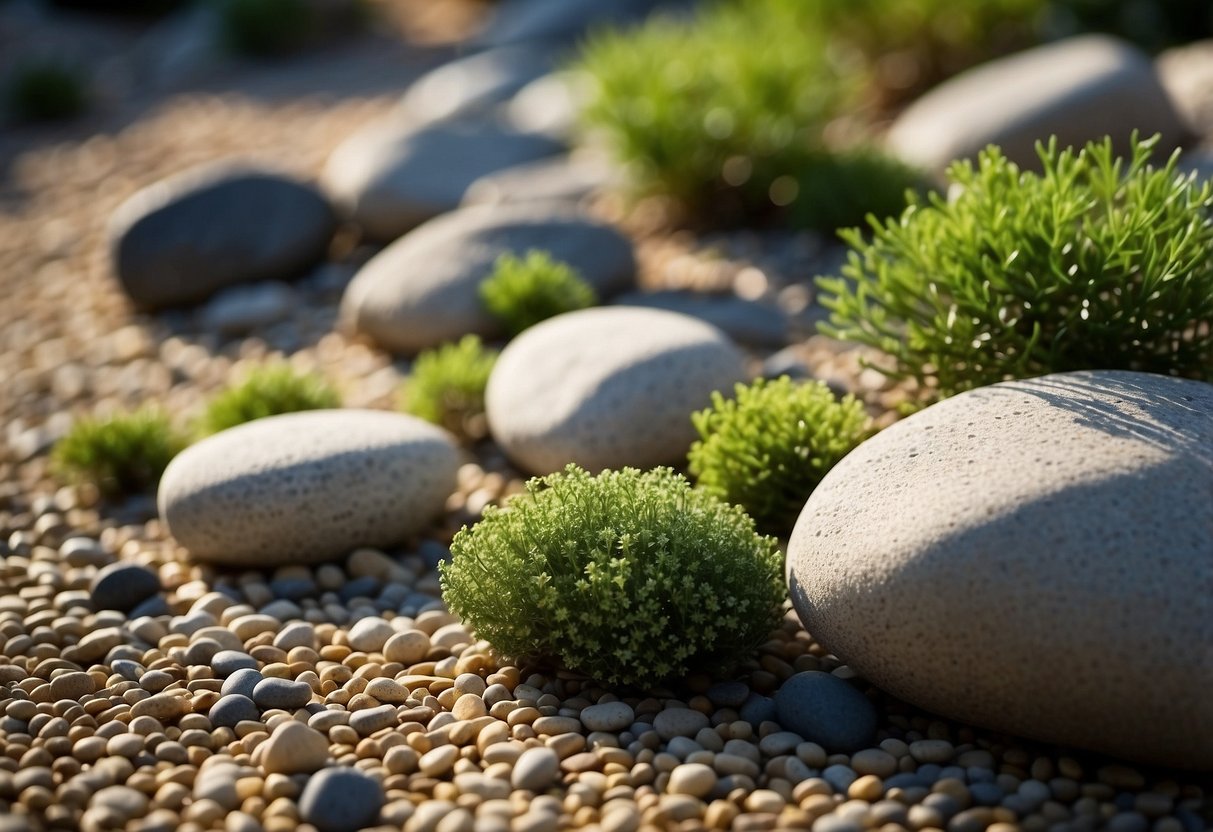
Creating a Zen rock garden with juniper can add tranquility to your backyard. Start with a base of fine gravel or sand, which you can rake into calming patterns.
Incorporate juniper plants for their hardy nature and evergreen beauty. Arrange rocks around the junipers to create a balanced look. For added peace, consider including a miniature stone pagoda or lantern.
10) Water Feature Surrounded by Junipers

A water feature can make your garden feel more peaceful. Imagine a small pond or a pondless waterfall in your yard.
Surround it with juniper shrubs for a natural look. Junipers come in different shapes and sizes, such as creeping forms that hug the ground or taller varieties that add height.
Adding some mulch around the plants can help keep moisture in the soil. This simple addition can tie your garden together, making it a relaxing spot to enjoy.
Choosing the Right Juniper for Your Garden

Picking the ideal juniper for your garden depends on the climate, soil, and desired garden style. Understanding these aspects ensures your juniper will thrive and enhance your landscape.
Climate Considerations
Junipers are quite hardy but it’s important to choose a variety suited to your local climate. Some junipers, like the Grey Owl juniper, thrive in zones 4-9. Others may need milder conditions.
Consider the amount of sunlight your garden gets. Junipers generally love full sun but some can tolerate partial shade. Also, think about temperature extremes. Some junipers handle cold winters well, while others are better for warm, dry areas.
Soil Preferences
Junipers prefer well-drained soil. They don’t like standing water, which can cause root rot. Sandy or rocky soils are usually perfect for these plants.
Before planting, test your soil’s drainage. Dig a hole and fill it with water. If it drains within a few hours, it’s perfect for junipers. If not, you might need to improve drainage or choose a different planting spot.
Adding organic matter can help improve the soil’s structure. Even though junipers are tough, enriching the soil will support healthier growth.
Juniper Varieties for Different Garden Styles
For a sleek, modern look, consider columnar junipers like the Skyrocket. Their tall, narrow shape makes them perfect for tight spaces.
In a more rustic or natural garden, try creeping junipers like the Blue Rug. They spread low and wide, making great ground covers on slopes or rocky areas.
Shrubby junipers, such as Sea Green, fit well into mixed borders or as standalone shrubs. These types often have dense, bushy growth that can add texture and structure to your garden.
Mix and match different juniper varieties to create a diverse and interesting landscape. Their versatility means you can find a juniper to suit almost any garden style or space.
Planting and Caring for Juniper

Junipers are hardy and adaptable shrubs ideal for various garden styles. Following proper planting techniques, consistent watering, and routine maintenance will ensure they thrive in your garden.
Planting Techniques
Start by digging a hole slightly wider than the root ball. This ensures the roots have enough space to spread. If the roots are circling inside the pot, carefully untangle them or make slits with a knife.
Position the plant in the hole, keeping the top of the root ball a bit above ground level. Doing so helps prevent waterlogging. After placing the plant, backfill with soil, pressing gently to remove air pockets. Adding a little fertilizer at this stage can boost initial growth.
Finish by mulching around the base to retain moisture and regulate soil temperature.
Watering and Fertilizing
Initial watering is crucial. Right after planting, water the juniper thoroughly. Consistent watering is essential during the first year, especially when the soil feels dry an inch below the surface. Adequate water helps establish strong roots.
For mature junipers, watering needs decrease. They tolerate drought well but benefit from occasional deep watering during prolonged dry spells. Fertilizing isn’t a huge requirement. A balanced, slow-release fertilizer applied in spring can support growth. Avoid over-fertilizing, which can lead to excessive foliage at the expense of root health.
Pruning and Maintenance
Pruning helps maintain the shape and health of your juniper. Regularly check for dead or damaged branches and trim them back with clean, sharp shears. This encourages healthy new growth and keeps the plant looking neat.
For formal shapes or hedges, prune in late winter or early spring before new growth starts. Be careful not to cut into old wood, as junipers can struggle to regrow from these areas. Light trimming throughout the growing season keeps the plant manageable.
Mulching can control weeds around the base of your juniper, reducing competition for water and nutrients. Keep the mulch away from the trunk to prevent rot. Regular checking and maintenance ensure your juniper stays a beautiful feature in your garden for years.
Designing Your Juniper Garden

Designing a juniper garden can transform your outdoor space into a vibrant, low-maintenance oasis. Focus on creating focal points, pairing junipers with the right companion plants, and incorporating seasonal colors to add year-round interest.
Creating Focal Points with Junipers
Junipers can serve as eye-catching focal points in any garden. Consider using tall, columnar varieties like Juniperus virginiana (Eastern red cedar) to draw the eye upward and add height to your landscape. Smaller, shrubbier forms such as the Grey Owl juniper are ideal for mid-level accents.
Arrange your junipers in groups of three to five for more visual impact. For a dramatic effect, plant them in a staggered pattern rather than straight lines. This adds depth and a natural feel to your garden.
Companion Plants for Juniper
Choosing the right companion plants can enhance the beauty of your junipers. Plants that thrive in similar conditions, such as well-drained soil and full sun, work best. Lavender and sage are great options because they offer contrasting colors and textures.
Use groundcovers like creeping thyme or sedum to fill in spaces around your junipers. These low-growing plants not only add visual interest but also help keep weeds at bay. Avoid water-loving plants as they might not thrive alongside the drought-tolerant junipers.
Seasonal Interest and Color
To keep your garden looking vibrant throughout the year, focus on seasonal interest and color. During spring, choose junipers that produce small flowers. Blue Star juniper is a good option with its bluish-green foliage.
In summer, the berries of certain juniper varieties, like those on the Grey Owl, can add pops of color. Autumn brings a rich, coppery hue to many juniper types, and during winter, their evergreen nature ensures your garden remains lively even in the cold months.
Mix in perennial flowers and shrubs that bloom in different seasons to add continuous color and variety to your juniper garden.







